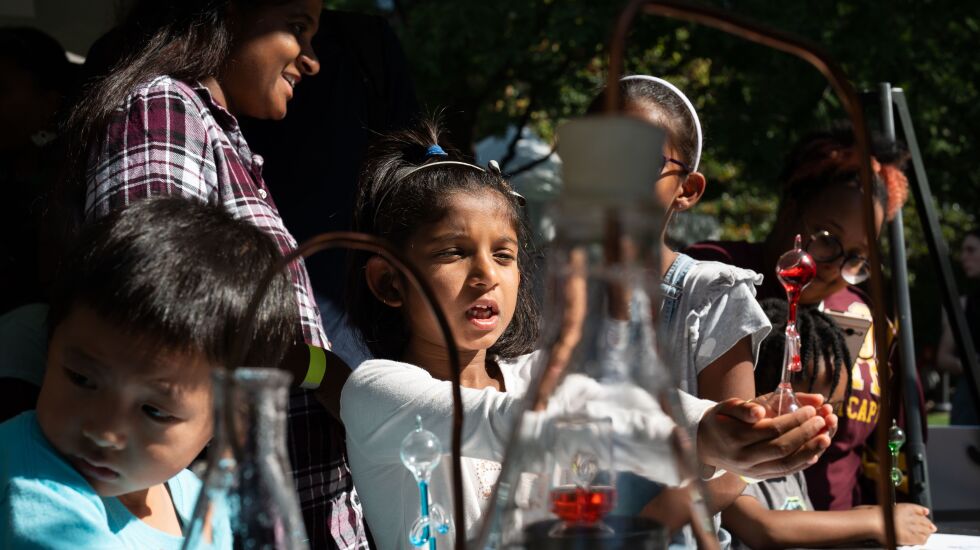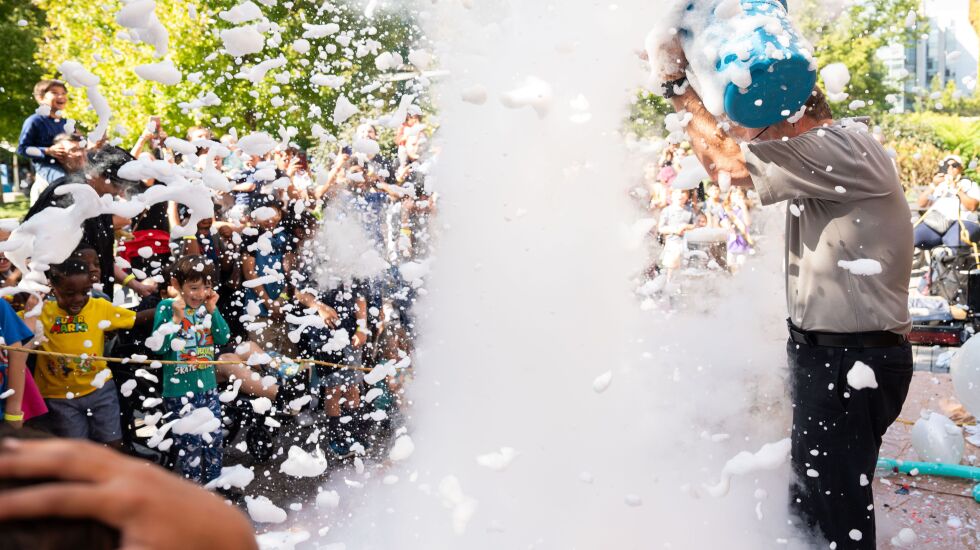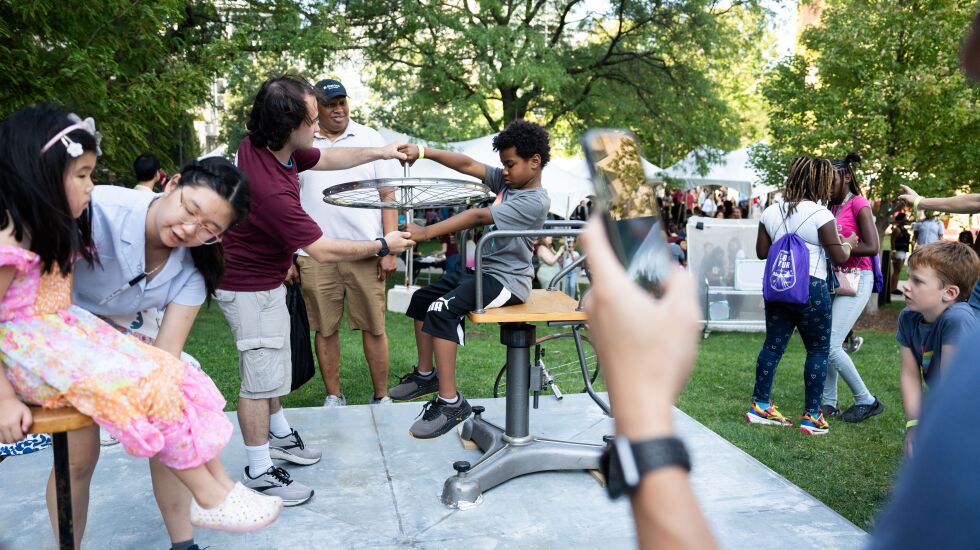
Isaac Magallanes, a University of Chicago graduate student studying mammal evolution, grew up with a “plastic army of dinosaurs.”
He spent Saturday afternoon teaching kids about what they can learn from fossilized teeth at the Hyde Park school’s second annual South Side Science Festival — a chance for residents to meet with university students and scientists through more than 60 live demonstrations, four panels and other activities.
Magallanes said he saw his younger self in many of the kids who passed through Paleontology Alley, a series of tents dedicated to the science, complete with a dig table and 3D-printed bones.
More importantly, though, he said he was excited to be there himself to show diversity in a field that all too often lacks it.
“[As a kid,] looking at all the representations of paleontologists in documentaries or movies, I never saw anyone like me there,” Magallanes said.
“To be able to represent what a scientist looks like to kids who come from the same background as me, or are just not used to seeing someone who looks like me, is really important to me… I know I would’ve felt a lot more encouraged if I saw that representation.”

At the table with him was Caroline Abbott, another graduate student studying evolutionary biology. She said while the event was an exercise in improv for some young scientists who were bombarded with questions from curious kids, it was an important opportunity for kids to get hands-on experience.
“There’s only certain kinds of science that you’re learning about in schools in very particular ways,” Abbott said. “Learning science by memorizing facts instead of by doing science, I think, is really not beneficial for children. This is so much more fun and so much better at getting concepts in their brains.”
Jan Howell’s grandsons, Jeremiah and Josiah, were among the youngsters who made a beeline for the tables with fossils.

Howell, a first-time attendee, said she regularly takes them to the Field Museum and the Shedd Aquarium because they’re most interested in animals — especially ones that have been gone for millions of years. She described Jeremiah as more of a “naturalist” despite an early interest in math.
“Exposure is everything,” Howell, a Hyde Park resident, said. “They remember this kind of stuff.”

The boys’ father and grandfather both attended UChicago, and she’s hoping this is the first step in the kids continuing that legacy.
“We will be back next year,” Howell said.
Shubha Pani, a PhD candidate in the university’s chemistry department, was running a table allowing kids to look at leaves under a microscope and observe bacteria cultures that researchers had grown overnight from swabs taken around campus.

She said she hopes to see more events like this that can help address the “growing distrust” with scientists, bringing the average person closer to the academics that inform health policy.
“Things you can see and feel and touch, it’s easier to believe in those things,” Pani said. “This is a small attempt in building trust with society, but we hope this bridges the gap between the general crowd and big fancy labs we work in.”

Aside from that larger mission, Pani said it was nice to get out of the labs and be able to perform science demos, saying if one kid was inspired, the day would be a success.
Magallanes said it also helped bring scientists back to their roots.
“I think for us as scientists, it’s really important for us to do events like this,” Magallanes said. “They help us remember why we got into this in the first place — this stuff is just cool.”















